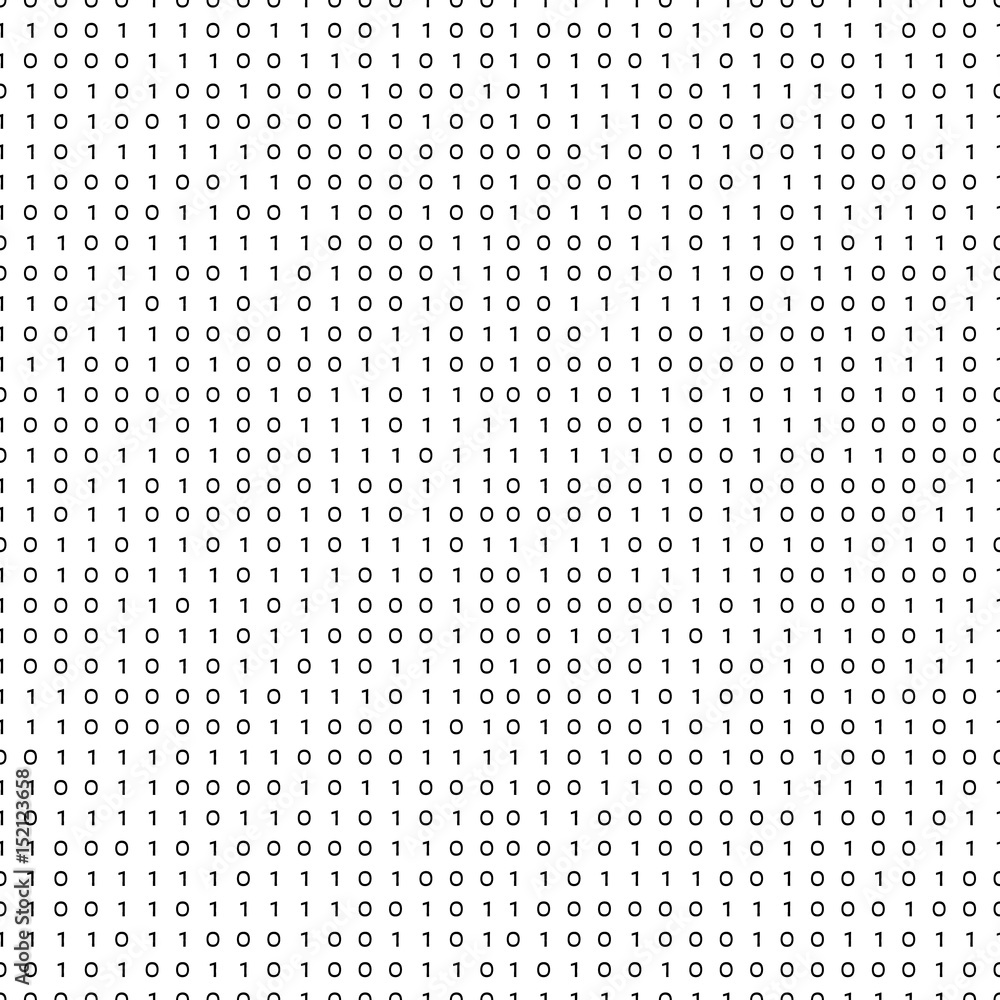The Importance of Zeroes in the Binary World
Binary code, the foundation of digital communication, relies heavily on the presence of the binary digit, or bit. While ones represent the presence or assertion of a state, zeroes play an equally significant role by indicating its absence or negation. This critical partnership between ones and zeroes forms the bedrock of all modern electronics and forms the backbone of the digital realm as we know it.

Image: stock.adobe.com
In the binary number system, zeroes serve as placeholders to maintain the proper positional value of each digit. This systematic arrangement enables the representation of even the largest numbers using a combination of ones and zeroes. Without zeroes, binary code would lack structure and clarity, making it challenging to efficiently encode and decode information.
A Deeper Dive into the Binary Code
Definition: Binary code is a base-2 number system that uses only two digits, 0 and 1, to represent data. It is a positional notation, meaning the value of a digit depends on its position within the number.
History: The concept of binary code can be traced back to ancient China’s I Ching, but it gained prominence in the 17th century with Gottfried Leibniz’s work on binary arithmetic. George Boole’s Boolean algebra, developed in the 19th century, laid the foundation for Claude Shannon to develop the practical application of binary code in the 20th century.
Meaning: Binary code serves as a fundamental language for computers, allowing them to store, process, and transmit information. It is used in various fields, including communication, data storage, and digital logic, and has become indispensable to the functioning of modern technology.
The Evolution of Binary Code
Binary code has undergone significant advancements throughout history, driven by the increasing demand for data storage and processing power.
Variable-Length Encoding: Huffman coding and other variable-length encoding techniques emerged to optimize data transmission by assigning shorter codes to frequently occurring characters.
Error Correction: Error-correcting codes were developed to safeguard data integrity during transmission by adding redundant bits that enable the detection and correction of errors.
Quantum Computing: The advent of quantum computing introduced new possibilities for the representation and processing of binary data using quantum bits, or qubits.
Practical Tips for Working with Binary Code
Convert Binary to Decimal: Multiply each bit by its corresponding power of two and sum the results. For example, 1011 (binary) = 1 23 + 0 22 + 1 21 + 1 20 = 11 (decimal).
Convert Decimal to Binary: Repeatedly divide the decimal number by two and record the remainders until the quotient becomes zero. The remainders, read from bottom to top, represent the binary equivalent. For example, 11 (decimal) = 1011 (binary).
Expert Advice for Advanced Binary Manipulation:
- Understand Boolean algebra and its operations (AND, OR, NOT, XOR).
- Utilize bitwise operators in programming languages to perform efficient bit-level operations.
- Explore binary search algorithms for efficient data retrieval from sorted arrays.

Image: www.shutterstock.com
Frequently Asked Questions about Binary Code
Q: What is the binary equivalent of the letter “A”?
A: 01000001
Q: Can binary code represent negative numbers?
A: Yes, using two’s complement or sign-magnitude notation.
Q: What is the purpose of the parity bit in binary code?
A: To detect errors during data transmission by ensuring an even or odd number of 1s in the codeword.
Zeroes Partner In Binary Code
Conclusion: Embracing the Zeroes and Ones
The binary code, with its intricate dance of zeroes and ones, has empowered the digital revolution and transformed the way we communicate, process information, and interact with technology. Understanding and embracing the significance of both zeroes and ones is essential for anyone interested in grasping the fundamentals of computer science and harnessing its limitless potential.
Call to Action:
Have we piqued your interest in the fascinating world of binary code? Explore further resources and delve deeper into its intricacies. Engage with us by sharing your thoughts and experiences in the comments section below.






